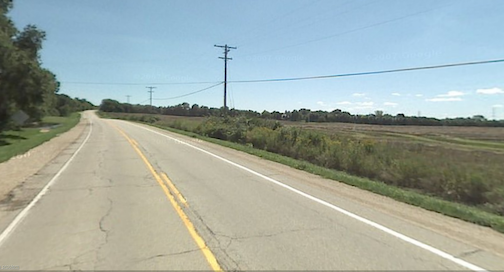Scott Walker, maybe we would respect your decision to pull the plug on high-speed rail in your state a little more if you weren’t such a hypocrite about transportation spending.

The Wisconsin governor refused to pony up an estimated $4.7 million a year to provide 21st century intercity rail service to his constituents. But he’s only too happy to spend $1.2 billion on just four highway projects that will keep the state chugging along as if it were still the 1950s.
Walker’s backward thinking on transportation is well-trod territory. WISPIRG has put the cherry on top with its new report, “Highway Boom, Budget Bust.”
“The main finding of this report is that Wisconsin stands out like a sore thumb, compared to most other states, with regard to how much the state plans to spend on new road capacity and highway development when you consider our relatively slow population and driving growth,” wrote WISPIRG Director Bruce Speight. “The trends hardly justify diverting limited transportation resources from other uses and modes.”
According to the Tri-State Transportation Campaign’s report on State Transportation Improvement Plans, Wisconsin’s Department of Transportation plans to spend 30 percent, or $1.6 billion, of its STIP dollars on new road capacity. That puts the state in 11th place in the nation for the proportion it spends on road capacity. The national average is 19 percent.
Beware of placing too much importance on STIPs, though -- as Smart Growth America cautioned after Tri-State released its report, the plans are often rosier than the reality. At the moment, Wisconsin is still planning to spend more on repair than new construction -- but historically, states end up spending less on repair and more on new road capacity than they plan, and there’s no guarantee that Wisconsin won’t go down that road too. And that would be too bad, since 43 percent of Wisconsin’s roads are rated as being in “less than good” condition and it has 1,142 structurally deficient bridges.
If we do trust the STIPs, though, only 10 other state governments are planning to spend a larger portion of their transportation improvement funds on new roads, and most of those have fast-growing populations: Nevada, Arizona, Texas, North Carolina and Utah, for example.

Which is not to say Wisconsin is all alone in its bad decision-making: Several states have even slower population growth and are spending even greater proportions of their STIPs on road building: Mississippi is 37th in the nation for projected population growth between 2000 and 2030, and the state is spending 45 percent of its STIP on road capacity. Indiana, Kentucky, and Alabama have similar numbers.
And maybe that’s appropriate. It's the states expecting population booms that we should be more worried about -- the Arizonas and the Utahs, which are misguidedly doubling down on single-occupancy vehicles rather than modes that can more efficiently move large numbers of people. Sounds like a recipe for congestion, obesity and smog.
Speight acknowledged in an email exchange that the emphasis on population is a little bit off the mark. “DOTs are quick to throw money at highway widening projects to solve most any problem when there are often more efficient and effective ways to move people around,” he wrote. “We are simply making the point that even by some of the common metrics (more people, driving more), Wisconsin’s extravagant highway spending is wasteful, misguided, and out of touch with what is happening. The only apparent beneficiaries would be the highway lobby[ists] who profit from extravagant highway spending.”
Still, Speight told me, most of Wisconsin's projected population growth -- modest as it is -- is in urban areas. Wouldn't more urban transportation solutions be a better idea than highway building to accommodate the new residents?
And it is elucidating to look at Wisconsin’s closest neighbors: “Minnesota’s population is projected to increase by 28 percent, but is planning to spend only 6 percent of its limited transportation funds on highway expansion,” Speight writes. “Michigan’s population is projected to increase by 7.6 percent, but is planning to spend 9 percent on new road capacity.”
When it comes to driving trends, Speight’s point is well taken. Why would you build so much new roadway capacity in a state that’s driving nearly two billion miles per year less now than it did in 2004? At a per-capita level, each Wisconsinite is logging 500 miles less per year than they did then. As we know from another ground-breaking PIRG report, young people drove 23 percent fewer miles in 2009 than in 2001. Transit use is up 40 percent among that demographic.
So what should the state do? Revamp its STIP process, first and foremost, says Speight. Justify decisions with population growth and transportation trend data. Reprioritize funding for repair. Bump up funding for “more cost-efficient ways to alleviate congestion,” like transit, biking and walking. And, perhaps most important, evaluate projects based on their impacts on oil consumption, water and air quality, congestion, safety, and global warming pollution. That's something far too few transportation officials do -- not just in Wisconsin but across the country.





